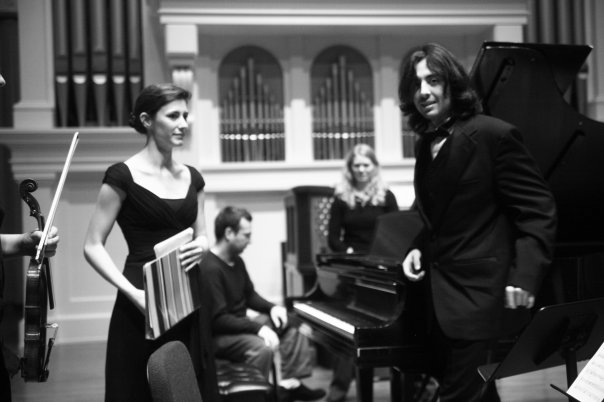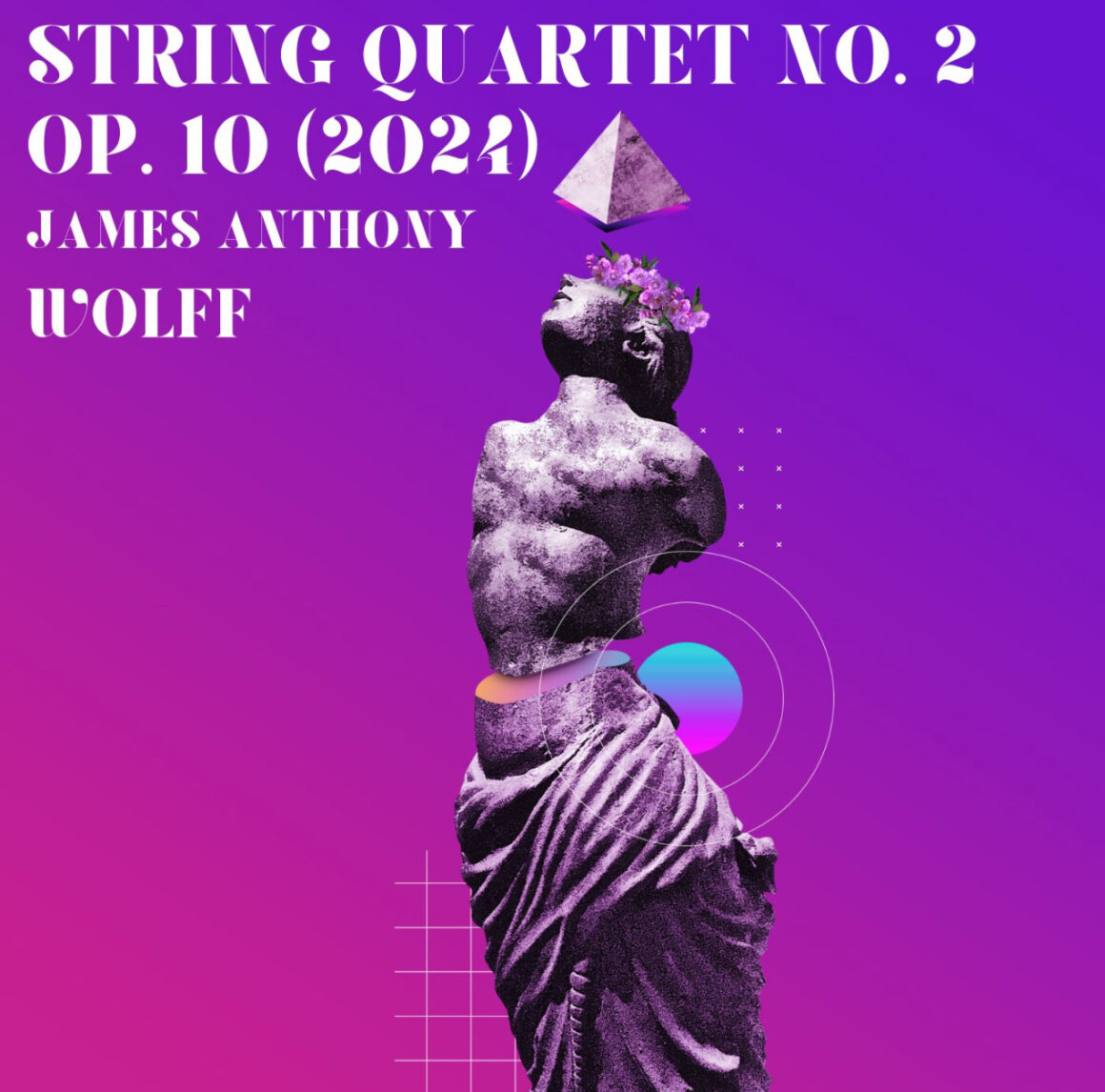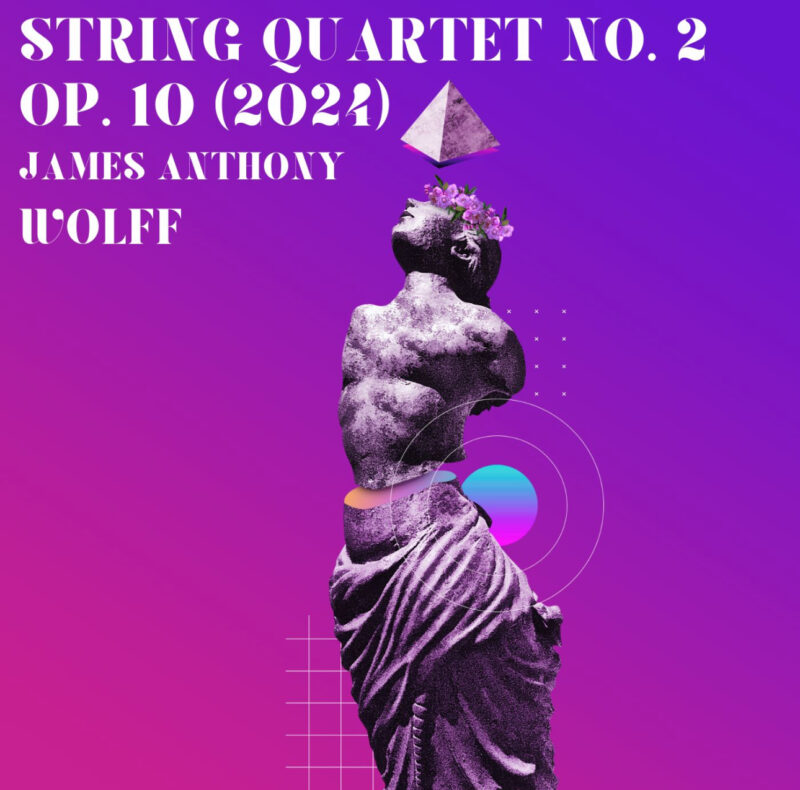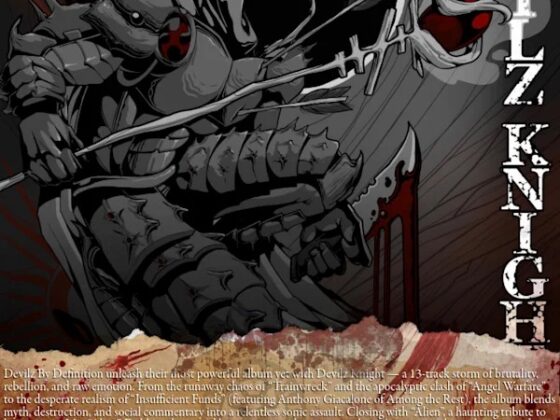For an artist best known for expansive, cinematic indie rock under the banner of Harvest Runes, composer James Anthony Wolff makes a striking shift inward with his String Quartet No. 2, Op. 10. What emerges is a chamber work of intimacy and complexity—an introspective offering that speaks with a clarity many contemporary works strive for but rarely achieve.
Wolff, whose eclectic career spans classical composition, legal strategy, and the architecture of space and AI policy, has always approached structure as a creative language. With this second string quartet—one of ten opus-numbered classical works in his catalog—he reaffirms his place not only as a cross-disciplinary thinker, but as a serious contributor to the 21st-century chamber music repertoire.
The piece is structured in three movements, each distinct in mood and shape, yet unified by a shared tone of restraint and intention.
The first movement sets the stage with a measured rhythmic figure that quietly anchors the quartet from its first breath. It establishes a sense of pulse without urgency, allowing harmonic shifts to evolve naturally over time. Subtle variations in phrasing and voicing give the impression of movement within stillness—like watching light shift across a textured surface. There’s a sense of memory embedded in the motif, as if the music is remembering itself in real time.
By contrast, the second movement opens into something far more atmospheric and mysterious. It trades pulse for spaciousness, blurring harmonic boundaries and allowing melodic fragments to drift like echoes in a large, unlit room. The result is haunting but never bleak—there’s a vastness to it that feels deeply human, almost existential. This is music that doesn’t lead, but surrounds—an invitation to listen to what can’t quite be named.
The third movement is the heart of the work. Slow and luminous, it’s a piece of music that doesn’t unfold so much as ascend. With long, lyrical lines and beautifully balanced voicings, it moves with a quiet sense of awe. Here, Wolff’s melodic instinct shines—his lines are not showy, but they carry an emotional weight that feels undeniable. The movement doesn’t reach for resolution or climax; instead, it offers transcendence. It’s an arrival at something still, but elevated—like the soft glow of a distant light finally coming into view.

While Wolff is often associated with the lush, narrative-driven textures of Harvest Runes—a project signed to Sungate Records—this quartet marks a different kind of narrative: one of subtlety, discipline, and refinement. It’s a reminder that the most compelling stories in music aren’t always the loudest. Sometimes they’re the ones that echo long after the sound has faded.
What makes String Quartet No. 2 resonate so deeply is its restraint. In an era of musical maximalism, this is a work that dares to breathe. And in doing so, it offers not only a compelling addition to Wolff’s catalog, but a moment of real reflection for the listener.
String Quartet No. 2, Op. 10 is available now, and marks a standout achievement from a composer whose creative evolution continues to surprise and inspire.
You can listen to String Quartet No. 2, Op. 10 and explore James Anthony Wolff’s full classical catalog atwww.wolffmodernclassics.com or visit his official YouTube channel at youtube.com/@WolffModernClassics.











